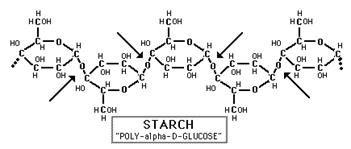

We suggest that before the initial steps of accretion a number of these complex molecules coagulated onto very small grains (VSGs) or themselves formed VSGs, which were subsequently coated with ice in molecular cores, in agreement with some recent IS dust models (Jones 2016). The subsequent survival of these molecules during this cometary nuclei formation period is then necessary to explain the direct connection with DIB carriers in the ISM. Such material would have survived the radiation of the early Sun if located in the outer regions of the Solar system, beyond the orbit of Neptune at 15–30 au, in the same location comet nuclei formed and survived, creating the present Edgeworth–Kuiper belt. Since the primitive solar nebula formed from a cloud of ISM material, these DIB carriers were certainly present in the early stages of the formation of the Solar system. They probably constitute ‘… the largest reservoir of organic matter in the Universe’ (Snow 2014).

The most likely source of these features are organic molecules (DIB carriers) in the gaseous phase of the ISM, which can be traced to the other components of the ISM: H, H 2 and IS dust reddening the stellar spectra.

In particular, diffuse interstellar bands (DIBs) are absorption features recorded in the spectra of stars in the visible and near infrared. One technique characterizes the ISM material by studying the absorption imprinted on the spectrum of a star. Since the initiation of the Rosetta project in the 1980s, many advances have been made in the field of physics and chemistry of the interstellar medium (ISM), the very material from which condensed the Solar system. The ESA Rosetta space mission to comet Churyumov–Gerasimenko (67P/CG) ended in 2016 September with the Rosetta orbiter impacting the surface of the nucleus, concluding over 2 yr of observations, including those from the Philae lander and providing an unprecedented wealth of data on the activity, composition and structure of a comet nucleus, allowing the inference of scenarios related to the formation and evolution of comets in general. The central part of pre-solar nebula (PSN) became the Sun, while several planets formed from the material spread in a disc, together with comets at distances 15–30 au from the Sun. This conclusion implies that a future sample-return mission of a comet nucleus would not only provide unique information on comets, but also on the exact nature of the interstellar species producing the hundreds of DIBs, an unanswered question since their discovery several decades ago.Ĭomets: general, comets: individual: 67P/Churyumov, Gerasimenko, protoplanetary discs, dust, extinction, ISM: lines and bands, ISM: molecules 1 INTRODUCTIONĬomets are thought to be the most primitive bodies of the Solar system, remnants of the formation process in which a cloud of interstellar (IS) material collapsed under the effect of self-gravitation. The decrease of DIB during line-of-sight crossings of the dense cores of interstellar clouds and the simultaneous steepening of the far-UV part of the reddening curve suggest that DIB carriers coagulate and are constituent of the very small grains eventually preserved in comets. While the organic to mineral mass ratios R C for comet Halley and 67P/CG were measured in the range ∼0.32–1.0, we estimate that the DIB carriers alone can provide R ISM = 0.32, but that this ratio could be increased by other organic molecules in the ISM that do not show up in absorption. This is in contrast with the sublimation of H 2O ice, according to diverse comet D/H values. These large organic molecules were present in the ISM prior to the emergence of the pre-solar nebula and were conserved during comet formation in the solar nebula due to gentle, hierarchical accretion, a scenario based on many lines of evidences collected with Rosetta rendezvous mission (Davidsson et al. We suggest that the large organic molecules found in the dust of comet 67P/CG originated from the interstellar medium (ISM), and that this material is the source of absorption features in stellar spectra known as diffuse interstellar bands (DIBs).


 0 kommentar(er)
0 kommentar(er)
